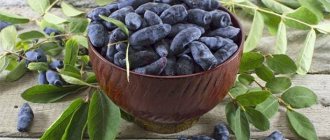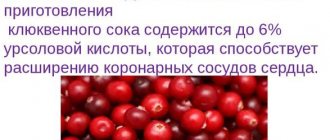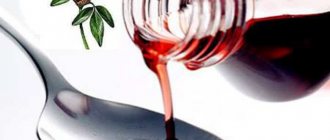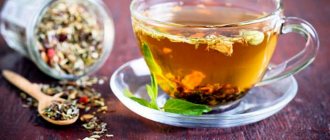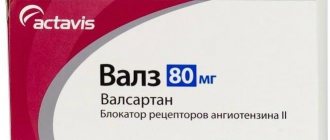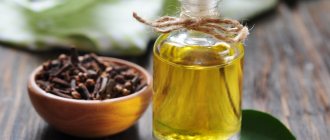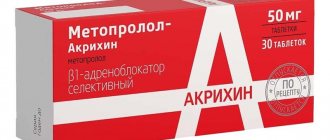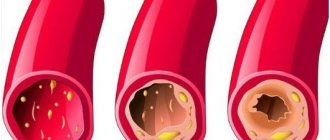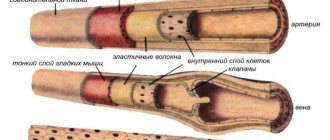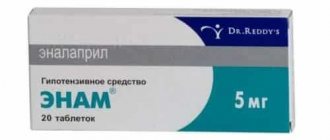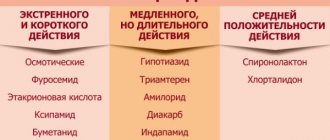The flora of the Earth is rich and beautiful. Among its representatives are many trees and shrubs that have beneficial medicinal properties. Hawthorn is no exception; its beneficial properties and contraindications were known to our ancestors. Hawthorn fruits, flowers and other parts of the plant have been used as healing agents by proponents of traditional medicine for many years. Today, the plant is recognized as a medicinal plant, and the pharmaceutical industry produces drugs based on it.
Peculiarities
Hawthorn is a berry bush, famous not only for its healthy fruits, but also for the beauty of its lush snow-white blooms. The plant is decorative all year round until frost: in summer - thanks to its bright green foliage, and in autumn it is abundantly covered with clusters of orange or scarlet berries.
The splendor of the decoration, regardless of the season, gave the bush a respectful name from the Russian “boyar”. Other names for useful plants from the Rosaceae family: blood-red hawthorn, prickly hawthorn, hawthorn, glod, lady-tree.
Wild hawthorn species can be found in any territory of the northern hemisphere with a temperate climate. The area of natural growth of the crop is located between the 30th and 60th parallel in North America and Eurasia. Special cultivation of hawthorn as an ornamental, medicinal and valuable food crop is possible in other climatic zones.
Description
Hawthorn (Crataegus) is a deciduous tree-like shrub with thorny branches and edible fruits. Ripe berries of the crop are spherical or pear-shaped, similar to small apples with hard seeds.
A high-quality alcohol extract from hawthorn fruits should be prepared based on a ratio of 1:10. Where for 1 part of fresh fruit there are 10 parts of ethyl alcohol with a strength of at least 65%.
At home, lower strength alcohol is often used. Pharmaceutical tincture has a strength of 70% and can have a color from yellow-orange to red-brown, depending on the starting material.
The liquid is brightly colored, but transparent, with the possible precipitation of a small sediment.
Hawthorn tincture, the instructions for use of which recommend the drug as a cardioprotective agent, was originally used by the people as an astringent, mainly for intestinal disorders. Fruits are mentioned in the same quality by Avicenna.
In ancient Greek and Roman sources, the culture is described as a remedy for insomnia, palpitations and high blood pressure. At the end of the 19th century, European medicine successfully used hawthorn to correct tachycardia, reduce angina attacks, increase the strength of heart contractions and relieve nervous disorders.
All varieties and cultural hybrids of hawthorn have medicinal properties. But to prepare the tincture, it is recommended to choose prickly hawthorn, as the most studied and officially used variety in pharmaceuticals.
Storage
The pharmaceutical drug is packaged in small dark glass bottles and cardboard packs with mandatory instructions for use.
To preserve all the properties of the medicine, it is recommended to leave it in its original packaging, which protects the solution from sunlight and temperature changes. Home hoods are also stored in glass containers, hermetically sealed, always in a dark place.
The tincture should not be allowed to overheat above +20 °C. The safe storage temperature of the drug is from +5 to +16 °C. Under optimal conditions, the shelf life of hawthorn tincture reaches 3 years.
Video - Hawthorn: beneficial properties and contraindications
Hawthorn fruit supplements are sold in many forms. You can purchase capsules or tablets containing standard amounts of the active ingredients: oligomeric procyanidins or flavonoids.
If you prefer a liquid, you can also purchase extracts and tinctures containing active ingredients from the fruits of this beneficial plant.
And finally, you can purchase dried berries and other parts of the plant to brew hot, aromatic, healthy tea. Before using any form of supplement containing hawthorn, consult your doctor, who can advise you on how to use it safely.
Chemical composition
Hawthorn fruits at maximum ripeness concentrate a lot of useful substances, some of which are rarely found in plant materials, including fruits and vegetables.
Organic acids are considered especially valuable: ursolic, oleanic, citric, caffeic, crategusic, chlorogenic. Hawthorn is capable of accumulating in its fruits high concentrations of vitamins (A, E, C, group B, K, P), minerals (including large amounts of selenium, zinc and cobalt), tannins, and pectins.
The main active ingredients of hawthorn and their role in the body:
| Ursolic acid | Has bactericidal, diuretic effects, promotes vasodilation | |
| Other organic acids | They fight inflammation, inhibit the development of pathogenic microflora, participate in tissue regeneration, tone the nervous system, stimulate the digestion process and peristalsis. | |
| Flavonoids | Vitexin | Enhances metabolism, improves blood flow, relieves vascular spasms |
| Quercetin and quercitrin | Cleanses the bloodstream, strengthens vascular walls, binds free radicals | |
| Hyperoside | Improves oxygen saturation of tissues | |
| Active pectins | Binds and removes free radicals, helps maintain normal intestinal microflora, controls plasma sugar levels | |
| Vitamins and minerals | Increase the level of immune activity, compensate for vitamin deficiency, mineral deficiency, promote hematopoiesis | |
| Triterpene glycosides | Increases resistance to adverse factors: hypoxia, extreme temperatures, infections, toxic agents | |
| Flavone hycosides | Have a sedative effect on the nervous system, useful for depression, memory impairment, blurred vision, cataracts | |
Hawthorn tincture has a potassium concentration that can provide significant support to the cardiovascular system. Due to the rich mineral composition, the alcoholic infusion of berries is prescribed not only according to the official instructions for use, but also for disturbances in the production of hormones, physical exhaustion, weakness and nervous disorders.
Plant acids, flavonoids, tannins and other valuable compounds are easily dissolved in an alcohol solution, thanks to it they acquire special activity, are easily absorbed into the gastrointestinal tract and quickly enter the bloodstream.
Pharmacological action of hawthorn tincture
Due to the fact that fruits contain a large number of useful elements, with the help of drugs you can improve blood circulation in the heart and blood vessels, and thus you can increase the sensitivity of the myocardium to cardiac glycosides. This is one of the best means by which you can normalize blood pressure.
Hawthorn fruits have a mild effect. They are rich in a large amount of flavonoids, with which you can strengthen the vascular system and get rid of spasms in smooth muscles. The tincture is also rich in organic acid, which takes part in the metabolic process, as well as a sufficient amount of carotenoids that the body needs.
Hawthorn tincture contains tannin, fatty oil, pectin, glycosides, with the help of which the heart works hard and other useful biological elements.
With the help of hawthorn tincture, you can calm the nervous system, improve the functioning of the heart and blood vessels. Due to the fact that the drug reduces the excitability of the nervous system, you can get rid of anxiety, irritability, and insomnia. Hawthorn tincture is used for vegetative-vascular disorder that occurs during menopause; it is also recommended to be used in case of cardioneurosis, if you are worried about severe pain in the heart area; it is recommended to take it for a nervous disorder.
With the help of hawthorn tincture, you can alleviate the symptoms of hypertension and reduce high blood pressure. In severe cases at the late stage of hypertension, hawthorn tincture should be taken with other medications that can help lower blood pressure.
Hawthorn improves cardiac function and increases the effectiveness of cardiac glycosides. The tincture will help regulate the heart rhythm and normalize blood pressure. With the help of medications, you can relieve vascular spasm; this is one of the best drugs for coronary heart disease; this can reduce attacks of angina pectoris.
Due to the beneficial elements that are part of hawthorn, the tincture is used to improve lipid metabolism, reduce cholesterol levels, which accumulate in large quantities and then begin to be deposited in blood vessels; plaques are dangerous because they lead to the development of atherosclerosis. With the help of hawthorn, you can remove harmful substances; it has an antioxidant effect on the body.
Medicinal properties
The official instructions for hawthorn tincture (Crataegi tinctura) describe its pharmacological action as sedative, antispasmodic, cardiotonic and cardioprotective. The ability to nourish and tone the heart muscle is useful for tachycardia, hypertension, and age-related changes.
Other beneficial properties of hawthorn tincture:
- the drug reduces the excitability of the myocardium and the central nervous system;
- relieves spasms, dilates blood vessels;
- increases blood flow;
- improves thyroid function;
- prevents the deposition of cholesterol plaques on vascular walls.
The tincture is considered a symptomatic remedy for tremors and dizziness.
Hawthorn tincture on fruits and flowers is included in the complex therapy of the following disorders of the heart:
- ischemic disease;
- atrial fibrillation;
- persistent arterial hypertension;
- paroxysmal tachycardia;
- atherosclerosis.
Due to its rich composition and tonic properties, the tincture is able to enhance the body’s natural immune defense, therefore it is often used for recovery after serious illnesses and surgical interventions. For elderly patients, hawthorn is prescribed for memory problems, difficulties with blood supply to the brain, and age-related vision impairment.
Tinctures of Peony, Hawthorn, Motherwort, Valerian have a similar effect.
For women
In addition to the beneficial properties common to all categories of patients, hawthorn is of particular value for women's health.
The effect of hawthorn tincture on the female body:
- relief of symptoms of severe menopause: hot flashes, dizziness, mood swings;
- treatment of menopausal neurosis (as part of complex therapy);
- ensuring cellular respiration, which improves the functioning of the brain, heart, blood vessels and skin;
- Regular use of the product alleviates and, over time, completely eliminates migraine attacks.
Hawthorn tincture, the instructions for use of which indicate any period of pregnancy as a strict contraindication for use, can tone the uterus, and the effect of the plant on the fetus has not been fully studied.
Alcohol in the extract is also not recommended during pregnancy and lactation, even in minimal quantities. The active substances of hawthorn help reduce milk production or completely stop lactation.
For men
Hawthorn has powerful tonic and restorative properties, dilates blood vessels, and increases blood flow. This effect, combined with a sedative effect and the ability to increase stress resistance, is useful in the treatment of erectile dysfunction, impotence and infertility.
The combination of fruits and flowers in the preparation of tinctures is used to correct sexual problems caused by psychosomatic disorders. In case of pathologies of the central nervous system of organic origin, hawthorn is not able to have a pronounced effect on erectile function.
However, in this case, the tincture can be prescribed by a doctor as part of complex therapy to strengthen the immune system and improve overall health. While taking the extract, drug therapy may be more effective.
For children
Alcohol-containing drugs are prohibited for use by children under 14 years of age. But according to strict indications, with the permission of a pediatrician, hawthorn tincture can be used from the age of 12. A single dose for adolescents under 18 years of age should not exceed 10 drops. The dose is repeated three times a day, diluting the product with 50 g of cool water.
Vodka or alcohol tincture from hawthorn is used externally to eliminate juvenile acne, reduce the manifestations of diathesis, rashes, and irritation of various origins. Before applying to large areas, the tincture must be diluted with clean boiled water by half.
Pharmaceutical preparations with hawthorn
Hawthorn is presented in pharmacies as dried fruits and flowers, tincture, as well as combination preparations:
- Altai elixir, solution (24 herbal components);
- Gerboton, drops (hawthorn, rose hips, cranberry, black currant, eleutherococcus);
- Hypertonplant, collection (hawthorn, cudweed, motherwort, valerian, mint, plantain);
- Doppelhertz Energy Tonic, elixir (vitamins, microelements, honey, plant tinctures and essential oils);
- Cardiovalen, drops (lily of the valley, hawthorn, valerian, camphor, jaundice, sodium bromide);
- Kratal, tablets (taurine, motherwort, hawthorn);
- Sedoflor, tincture (clover, hawthorn, coriander, lemon balm, oats, hops, motherwort);
- Hawthorn forte, tablets (hawthorn, potassium and magnesium).
All these drugs are used in the treatment of increased irritability, sleep disorders, increasing the tone of the body and its protective properties, stimulating metabolic processes in the myocardium, and improving tolerance to physical and emotional stress.
Contraindications for use
Hawthorn itself in recommended doses does not cause toxic reactions, and its components do not accumulate in the body. The majority of contraindications relate to the presence of alcohol in the composition. However, regularly exceeding daily norms provokes a sharp drop in pressure, increases heart rate and makes the heart rate unstable.
Hawthorn alcohol extract is used with caution and under medical supervision for the following conditions:
- hypersensitivity to any components;
- gastric ulcer, exacerbation of gastritis;
Hawthorn tincture is contraindicated for peptic ulcers due to its alcohol content. - diseases of the gallbladder, liver or kidneys;
- traumatic brain injury, epilepsy, tendency to seizures.
Without consulting a doctor, it is prohibited to use hawthorn in parallel with antihypertensive, sedative drugs, cardiac glycosides (both pharmacological and herbal) due to the mutual enhancement of their effects. The tincture is also prescribed with caution in old age, if the remedy has not previously been used for treatment.
With continuous use for more than 1 month, the following side effects may occur:
- Bradycardia.
- Hypotension.
- Intestinal colic and nausea (when consumed on an empty stomach).
- Drowsiness, weakness, dizziness.
If side effects occur, stop taking the tincture. Moderate symptoms disappear on their own. Reception can be resumed after 14 days by reducing the dosage.
With a single use of a large amount of tincture, a reaction similar to acute alcohol intoxication may occur. In combination with alcohol intake, hawthorn tincture can lead to serious depression of the nervous system.
Side effects
Hawthorn berries are often used to treat the respiratory system and heart. Side effects are rare at normal dosages. But if the drug is taken incorrectly, problems with blood pressure appear.
- Blood pressure decreases and fatigue quickly appears during work.
- Digestive side effects. Nausea is one of the most common side effects, along with dizziness and bleeding in the intestines.
- Side effects when interacting with medications. If medications are taken to treat heart and blood pressure problems without medical supervision, hawthorn berries may interfere with the effects of such medications. The substance digoxin in such drugs is used for heart rhythm disorders, and hawthorn enhances the effect of the drug. Phenylephrine constricts blood vessels and is found in medications to treat cardiovascular disorders. Hawthorn dilates blood vessels, making the drug ineffective.
Use in folk medicine
Hawthorn tincture, the instructions for use of which describe the use of the product both internally and externally, also contains recommendations for a course of treatment and preventive dosages. Home and pharmacy hoods are subject to the same rules.
Principles for using hawthorn tincture:
- The maximum single dose of alcohol tincture (70%) is no more than 20 ml; vodka extract (from 40 to 50%) – 50 ml.
- As a preventive measure, take 10 drops of tincture no more than 4 times a day. The course continues for 3 weeks.
- The minimum therapeutic dose is 20 drops three times a day for 30 days. After a break of 14 days, therapy can be repeated.
- Sustainable results appear after 3-4 consecutive courses.
For oral administration, the tincture must be diluted with water to avoid burns to the esophagus. Use the product only after meals; taking it on an empty stomach can cause stomach and intestinal cramps, nausea, and vomiting.
For hypertension
To treat high blood pressure, prepare a standard fruit extract based on 70% alcohol, high-quality moonshine or store-bought vodka:
- The ingredients are measured at the rate of 100 g of fruit per 1 liter of alcohol.
- Mix hawthorn with alcohol in a glass container, trying to choose the container so that as little air remains as possible.
- Leave the product in a dark place for at least 21 days, shaking the sealed bottle regularly.
The standard tincture for hypertension is used in a therapeutic dose (20 drops three times a day) for a month, constantly monitoring blood pressure levels. The courses are repeated as necessary, but at least 3 times a year.
The hypotensive effect of hawthorn should be taken into account when treating any pathologies. So 2 tbsp. l. medications taken at a time can reduce the readings by 10 mmHg.
For the cardiovascular system
A remedy made from an equal amount of hawthorn flowers and berries, prepared according to a standard recipe, is especially useful for the treatment of heart pathologies. Doctors note that this tincture acts on heart contractions, like class 3 antiarrhythmic drugs.
Only a doctor should set the dose or course of treatment for heart problems. Sometimes only a prophylactic course can be used; other patients are prescribed the maximum allowable amount of tincture. The purpose depends on the degree of pathology, concomitant diseases, and the list of medications taken.
For uncomplicated angina, fatigue or stressful situations, no more than 20 drops at a time, three times a day, for 2 weeks are prescribed to support heart function.
For potency
Homemade tincture for treating male problems is made from fresh, dried berries or mixed randomly with flowers and leaves.
Preparation:
- Measure out 2 tbsp. l. crushed raw materials, place glassware.
- Add a glass of alcohol, shake and seal the container tightly.
- Leave the mixture in a dark place for 15 days.
- The finished solution is filtered.
Adult men weighing up to 80 kg are prescribed 25 drops up to 3 times a day to correct sexual problems. The course of treatment is at least 30 days.
During menopause
Hawthorn, prescribed for severe symptoms of menopause, not only relieves hot flashes, sweating, regulates blood pressure, but also helps reduce nervous tension, anxiety, and reduces mood swings. Use the tincture in an amount of no more than 15 drops up to 4 times a day, taking breaks during bleeding or once a month for 7-10 days.
Therapy can be carried out for a long time: 5-6 courses in a row. This treatment prevents age-related changes in the cardiovascular, nervous and reproductive systems. Stimulates the production of your own hormones.
For diabetes
Homemade tincture or pharmaceutical preparation of hawthorn can be taken for any form of diabetes. For this disease, it is better to use 40% infusions of berries, and coordinate the dosage with your doctor. Most often they drink 1 tsp of the product. 2 times a day for a month, then take a break for 7 days and repeat the therapy.
The positive effects of such treatment will also be a gradual reduction in excess weight, reduction of cardiac edema, improvement of peripheral circulation, and normalization of thyroid function.
Homemade hawthorn recipes
The plant is quite widespread, so it is independently collected and herbal medicines are prepared for the treatment of heart and nervous pathologies.
Collection and procurement of raw materials
Hawthorn flowers cannot be collected in rainy weather; only those that are fully open are chosen.
In the afternoon, after the dew has disappeared, the flower is removed with a piece of the stem, then laid out in a dark place with good ventilation. The fruits need to be picked for harvesting in October, they are washed, then placed in the oven with the door open and dried at temperatures up to 50 degrees until they darken.
Dried flowers and fruits should be stored in paper bags or canvas bags. There is a way to freeze it in the freezer for long-term storage.
Hawthorn tincture
To prepare the tincture use:
- vodka - two and a quarter glasses;
- fruits, flowers - five dessert spoons.
Duration of preparation – 15 days. Then you need to filter it and use 25 drops in water before meals. The tincture is prescribed for hypertension and coronary artery disease.
To learn how to prepare hawthorn tincture, watch this video:
Hawthorn infusion
Place 4 tablespoons of berries, whole or opened, into a liter thermos, pour boiling water to the top, leave for 6 - 8 hours. Take a quarter glass before each meal in case of irregular contractions, overexcitation, fatigue, heart pain, brief attacks of angina pectoris.
Hawthorn decoctions
A water bath is used to prepare the decoction. A container containing 500 ml of boiling water and 3 tablespoons of plant material is placed on it. Cooking time – 20 minutes. Then, after complete cooling, the broth can be used strained. The dosage and time of administration are the same as for the infusion.
Hawthorn juice
To strengthen the myocardium and nervous system, enrich it with vitamins and minerals during the period of fruit ripening, juice is squeezed out of them by passing the berries through a juicer. The resulting drink is drunk half diluted with water.
We recommend reading about traditional treatment of aortic atherosclerosis. You will learn about useful herbs and effective herbal infusions, tea for the prevention of atherosclerosis, and additional recipes. And here is more information about the treatment of cerebral atherosclerosis with folk remedies.
Hawthorn tea
Medicinal tea is prepared in a thermos - 20 berries are used for 1 liter of boiling water. Infusion time is 6 - 8 hours. To enhance vitamin activity, it can be combined with rosehip and chokeberry. Drink instead of regular tea.
Hawthorn is recommended to improve blood supply to the myocardium and brain. The effect of herbal remedies from fruits and flowers on the heart is to stimulate the force of contractions, while slowing down their rhythm. The pharmaceutical network has tinctures and hawthorn fruits; it is included in sedatives and antiarrhythmic drugs. If you prepare the berries of the plant yourself, you can prepare infusion, decoction and medicinal tea throughout the year.
Product in cosmetology
Hawthorn tincture, the instructions for use of which permit external use of the product, however, is usually not prescribed by dermatologists. But in home cosmetology, the available product is used quite widely, especially since the composition is suitable for any skin type.
Properties of hawthorn when used externally:
- helps components of cosmetic products penetrate deep into the skin;
- increases blood supply, which means nutrition and respiration of cells;
- disinfects, but at the same time softens the surface of the skin;
- reduces the fragility of blood vessels, treats spider veins (rosacea);
- whitens and detoxifies the upper layers of the skin.
Many organic acids in hawthorn, acting at the cellular level, smooth out fine wrinkles, enhance cell regeneration, and prevent premature aging.
Acne lotion
There is a special lotion made from extracts of hawthorn and marshmallow root against acne, blackheads, and pimples with purulent contents. Having ready-made alcoholic tinctures of plants on hand, you can prepare such a remedy yourself.
Preparation of lotion:
- Measure out 1 tsp. each alcohol tincture.
- Mix the components and add 100 ml of cold, filtered water.
- Shake the mixture and leave for 60 minutes at room temperature.
- If necessary, the infusion is filtered and then placed in the refrigerator for storage.
The product is effective as an anti-acne agent. To correct defects, wipe the face with a cotton pad soaked in the solution twice a day. If there are large affected areas, apply a lotion of gauze soaked in the product. This lotion can also cure seborrheic dermatitis in a few weeks.
Refreshing composition
A special cosmetic tincture prepared from hawthorn leaves and flowers has the greatest anti-aging properties. To prepare it, a small glass vial is filled 1/3 with crushed raw materials, and then topped up with vodka. The bottle is tightly sealed and stored in a dark place for 7 days. Then the composition must be filtered.
To obtain a rejuvenating agent, it is enough to dilute the tincture with water in a ratio of 1:10. Then lemon juice (for dry skin) or a few drops of a suitable cosmetic oil (for oily skin) is added to the composition.
Apply this tonic only after washing your face in the morning and after removing makeup in the evening. Soak a cotton pad in the product, and then carefully, without stretching the skin, treat the entire surface of the face, neck, and décolleté. In the presence of inflamed areas, use only a water-alcohol composition without additives.
Freckle cream
Onion juice (1/2 tsp) mixed with hawthorn extract (1/4 tsp) can be used to reduce age spots. For long-lasting action and quick effect, the resulting liquid is mixed with beaten egg white. The resulting cream is used to treat problem areas several times a day until the pigmented areas lighten.
Hair rinse
Hawthorn tincture, added in small quantities to rinse water, gives hair a healthy shine, a well-groomed appearance and gradually cures seborrhea. After 4 weeks of this rinse, dandruff disappears and the scalp stops flaking.
To 1 liter of infusion or decoction of any herb for rinsing hair (nettle, chamomile, mint, burdock), add 3 tbsp. l. hawthorn tincture, and then use the liquid as usual. Repeat the procedure after each wash of hair with shampoo. The procedure is especially useful for excessive oily skin, which leads to rapid hair contamination.
Hawthorn tincture in a pharmacy costs no more than 20 rubles, and a pack of dried berries will cost about 50 rubles. An affordable and effective remedy is easy to prepare yourself, using ordinary vodka as a basis. But before any use of herbal medicine, you should study the instructions so as not to harm your health through excessive or unreasonable use.
Hawthorn - how to brew and how to drink
Hawthorn fruits can be brewed and drunk as tea - it is incredibly tasty and healthy. How to brew and drink hawthorn:
- Pour 1 tablespoon of dried berries with 2 cups of boiling water;
- leave for 10-15 minutes;
- You can drink tea up to three times a day.
Store the tea in a tightly sealed container with 1 tablespoon of lemon juice to preserve the active ingredients.
Hawthorn tea should not be used concomitantly with medications that lower blood pressure. It can improve the effectiveness of such drugs.
Analogs
Preparations with hawthorn are available under various trade names, and there are also drugs based on various active ingredients that can be used to treat heart disease.
Medicines with hawthorn
In addition to tincture and other preparations called “Hawthorn”, the following preparations are produced based on the extract of this useful shrub:
- Valemidin is an alcohol tincture with mint, motherwort, hawthorn, valerian and diphenhydramine. Mainly used for neurotic disorders and hypertensive VSD. The cost of a bottle is from 110 rubles.
Fitorelax - contains only 80 mg of hawthorn extract and valerian extract, therefore it is used as a sedative. The price of the drug is too high - from 200 rubles.- Cedarvit - the main active ingredient of the elixir - seeds of the Siberian cedar pine, the drug also contains birch buds, eleutherococcus, chokeberry, fruits and flowers of hawthorn. Indicated for the treatment of asthenic and autonomic disorders and recovery from diseases of parenchymal organs. Price from 80 rub.
- Amrita is a general tonic preparation containing hawthorn, rose hip and juniper berries, cardamom seeds, elecampane rhizomes, ginger, licorice and thyme herb. The cost of the drug is about 30 rubles.
Of these analogues, Kedrovit contains the largest number of berries, so the remaining products are used primarily for preventive purposes.
Means with a similar principle of action
Among the drugs intended for the treatment of heart diseases, similar in action to hawthorn, the most popular drugs should be noted:
- Trimetazidine (from 130 rubles) and its analogue Preductal (from 600 rubles) are drugs with a metabolic effect, stimulate myocardial function and help increase overall tone.
Riboxin is a drug with metabolic and antihypoxic effects that supports heart function under heavy loads. The price of the drug is from 20 rubles.- Bravadin - necessary for angina pectoris and chronic heart failure. Cost from 540 rubles, a more expensive analogue is Coraxan, the price of which is about 1000 rubles.
- Mildronate is a solution and capsules based on meldonium, which is necessary for the normal functioning of the entire body and especially the heart. Price – from 230 rub.
- Mexicor is an antioxidant drug prescribed for the treatment of ischemic disorders and disruptions of blood flow in the vessels of the brain. Price – from 115 rub.
These drugs are used instead of hawthorn or between its courses; simultaneous use is rarely prescribed, since there is no complete information about the interaction of the plant extract with other drugs.
